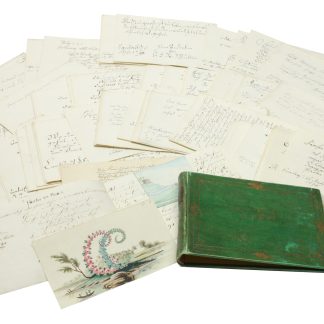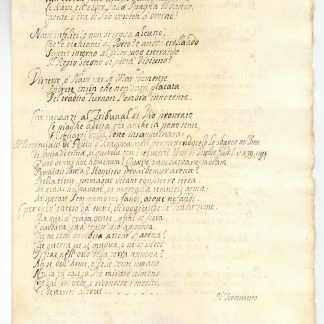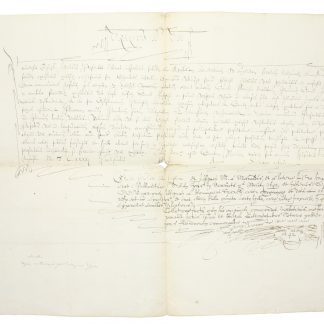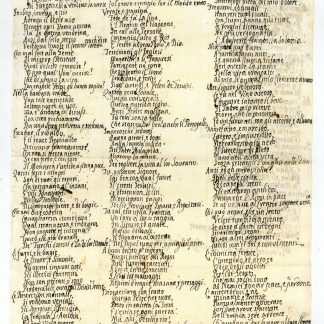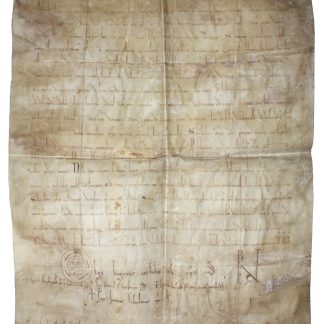The Cistercian Pope influenced by Bernard of Clairvaux
Papal bull.
Large folio (555 x 420 mm). Latin manuscript on vellum. 1 p.
€ 45.000,00
Exceedingly rare document from the third year of Eugene's papacy (1145-1153), concerning the Cistercian Abbey of Barzelle (Indre), with the Pope's rota, signature "Ego Eugenius catholice ecclie eps" (chancery), probably autograph subscription, and the valedictory Benevalete monogram.
Addressing the 1st Abbot of Barzelle named Foucher, Eugene places the monastery under his protection and confirms its rights and possessions, comprising the territory and forest of Barzelle and several smaller properties (pastures, manors, vineyards) along the river Nahon between Barzelle and Valençay: "Religiolorum locorum cura nos admonet de eorum pace arquibus utilitate sollicite cogitare. Nec dubio a siservorum dei petitionibus benigne concurrim clemente in nostris oportunitatibus dum repetimus. Ideoquibus dilecti in dno filii nostris justis postulationibus clementer annuim et Barzellacense monasterium inque divino mancipiati estis obsequio sub beati Perri et nostra protectione suspicimere presentis scripti privilegio comunimus. Statuentes ut quascumque possessiones quecumquibus bona inpresentiarum juste [...]".
Founded in 1137 as a filial house of the Le Landais Abbey, which went back to L'Aumône, the 7th filial house of Cîteaux Abbey, the Abbey of Notre-Dame de Barzelle never reached the size and significance to found filial abbeys of its own. The church of the monastery was not consecrated until 1219.
Born as Bernardo Pignatelli, or possibly Paganelli, in Pisa, Eugene III was the first of four Cistercian Popes and was heavily influenced by his friend and teacher Bernard of Clairvaux. Although Bernard initially condemned the election of Eugene, who came from humble origins and had never been a cardinal, he dominated the pontificate, which led to conflicts with the College of Cardinals. Most importantly, Bernard of Clairvaux played a central role in Eugene's announcement of the catastrophic Second Crusade in 1145 and its propagation. Almost for the entirety of his papacy Eugene III could not reside in Rome, due to the uprising led by Giordano Pierleoni in 1143 and the subsequent foundation of the Commune of Rome (1143-93), which renounced the temporal power of the Pope. Therefore, Eugene held synods in Paris, Reims, and Trier, mostly residing in various French cities, in Viterbo and in Tusculum.
Counter-signed by two cardinal-deacons (Oddo diaconus cardinalis sancti Georgii ad velum aureum, Gregorius diaconus cardinalis sancti Angeli), two cardinal-priests (Hugo presbyter cardinalis tit. in Lucina, Humbaldus presbyter cardinalis tit. sanctorum Johannis et Pauli), and two bishops (Albericus Ostiensis, 1080-1148, and Imarus Tusculanus, d. 1161). First line in majuscules. With an authentication of the Papal Chancery to the lower margin: "Dat. Altisiodori, per manum Guidonis, sanctae Romanae ecclesiae diaconi cardinalis et cancellarii".
Traces of folds. Some browning and somewhat stained. The original bulla (leaden seal) is missing.
A later copy of the bull on paper can be found in the departmental archive of Indre (H5). Full transcription on request.





